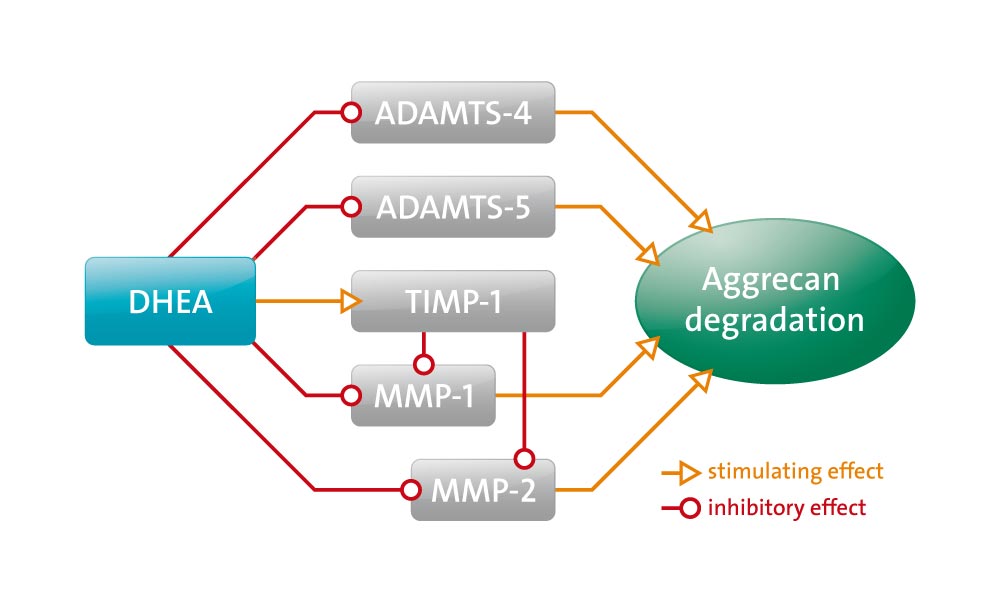Aggrecanase-mediated aggrecan degradation is a significant event in the early stages of osteoarthritis (OA). There has been much interest in the possible role of these aggrecanases, mainly aggrecanase-1 (ADAMTS4) and aggrecanase-2 (ADAMTS5), as therapeutic targets in OA.
The deficiency of current pharmaceutical treatments is that they mainly target the symptoms of OA but do not address the fundamental mechanism behind OA which is the destruction of articular cartilage.
Therefore, a treatment which would protect or regenerate cartilage on the cellular level would be desirable. Dehydroepiandrosterone (DHEA), classified as an adrenal androgen, is recently proposed to be “disease-modifying”, and has been found to counteract proinflammatory effects of catabolic cytokines, suggesting that it has a protective effect for osteoarthritic cartilage. The suppression by DHEA of some members of the MMP family in OA has been well demonstrated, however, the effect of DHEA on aggrecanases remains unknown.
This article reviews recent findings with regard to aggrecanases as critical catabolic enzymes and DHEA as a therapeutic agent in OA, and further discusses the possible relationship between aggrecanase and DHEA in the progression of OA.
